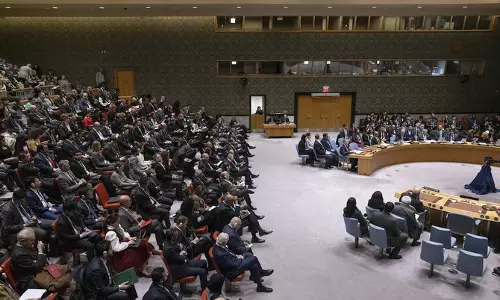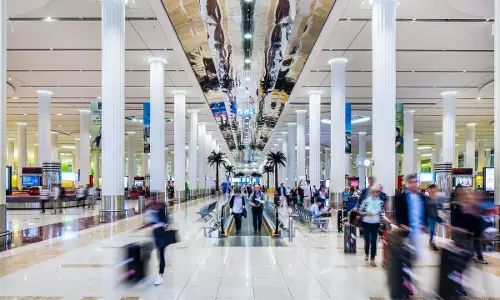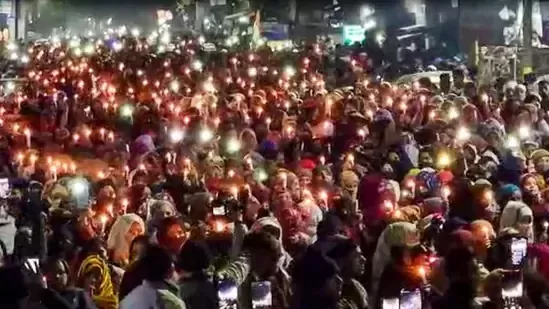
Haldwani's sighs
text_fieldsThe Supreme Court has blocked the BJP state government's move to evict half a lakh people in Haldwani, Uttarakhand's most populous city, as part of railway development. The government has asked 4,365 families who have been living in the area for generations and possess ownership documents dating back to pre-independence times to move out fortwith. The High Court, which intervened in the matter, not only sided with the government but also directed it to complete the 'mission' within a week, using force if necessary. The issue received national attention when the people of the region, who lived in fear of being displaced at any moment, took to the streets in protest. However, it is clear that the state administration did not feel any sympathy for the protest in which the records of tax payments for land and buildings since 1940 were highlighted. Even paramilitary forces were deployed in the region to deal with the strike. The Supreme Court intervened after considering the petition of the victims while officials were proceeding with the eviction. A bench headed by Justice Sanjay Kishan Kaul set aside the High Court verdict, observing that even if the land to be acquired is railway land, it is in no way justified to throw people onto the streets arbitrarily without any rehabilitation plans. More than cold, the people of Haldwani were totally frozen by the brutal intervention of the government. It can be said that they are relieved only temporarily because the stay is applicable only till the central government submits a clarification before the apex court on the matter.
Also read: 4000 families- mostly Muslims, schools, mosques face eviction from railway land in Uttarakhand
In many ways, the Supreme Court's intervention in Haldwani is both relevant and historic. Firstly, the apex court declared that the Uttarakhand High Court had taken a purely technical approach to the issue and issued a judgment saying that approach was wrong. Justice A.S. Okha specifically observed that this is a humanitarian issue that goes beyond technical and legal aspects. The suggestion of the judgment that any development involving displacement requires a practical solution can be assessed as a continuation of this observation. The court has also pointed out remedies including rehabilitation. It remains to be seen whether the state government and the railways will consider all this. Be that as it may, there is much to be happy about when a just and compassionate approach to victims comes from the Supreme Court. Especially, when recent experiences are of a contrary approach. This includes the recent Supreme Court judgment upholding demonetisation. In it, the court, seemingly ignored the human atrocities that had thrown lakhs of people into the streets in the process, reduced the issue to a purely technical one and gave the government a clean chit. The same happened in the Bilkis Banu case. It was this policy which our courts have been following in general in recent years, and the Uttarakhand High Court followed the trend. But it is no small thing that the Supreme Court is ready to correct the course.
Also read: SC calls eviction of thousands a human issue, asks Govt to find a workable solution
Another factor that makes this judgment stand out is that it has stopped the move for bulldozer raj in Haldwani, at least for the time being. Bulldozers are the BJP's biggest political weapon in areas where it holds sway. It has been seen recently in Uttar Pradesh, Gujarat, Assam, Madhya Pradesh, and the municipal corporation limits of Delhi. Bulldozers are one of their weapons to 'crush' political opponents. Most of the time the victims are the minorities of the country. In Madhya Pradesh's Khargon, Delhi's Jahangirpuri, and UP's Prayagraj, all the buildings that were demolished on the grounds that they were illegal, belonged to minority communities. Often the authorities came and demolished all the buildings one fine morning without even giving notice. All these demolished can be, and have been, see as part of Hindutva's minority hunting. Haldwani's case was no different. There too, the administration targeted areas like Gafoor Basti, which is populated by up to 95% Muslims. The gravity of the government's hunt comes to light from the fact that the measures to seize this area, where all the places of worship and schools are functioning, were started under the cover of the Covid-inducted lockdown. The courts heard the case only after everything was demolished in Prayagraj and Jahangirpuri. Naturally, later the court could only condemn the incident. Fortunately, in Haldwani, the Supreme Court intervened before demolition began. The people were saved only because of that. Still, the question remains how long this will last.
























